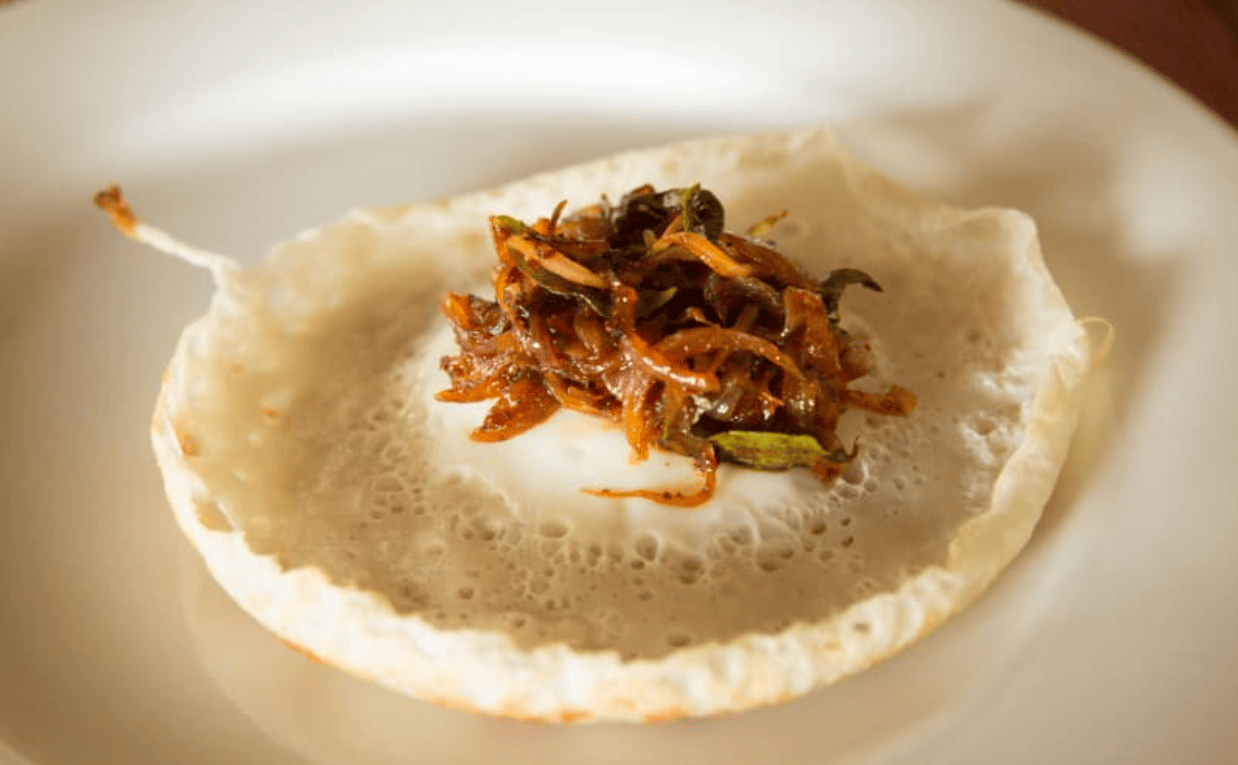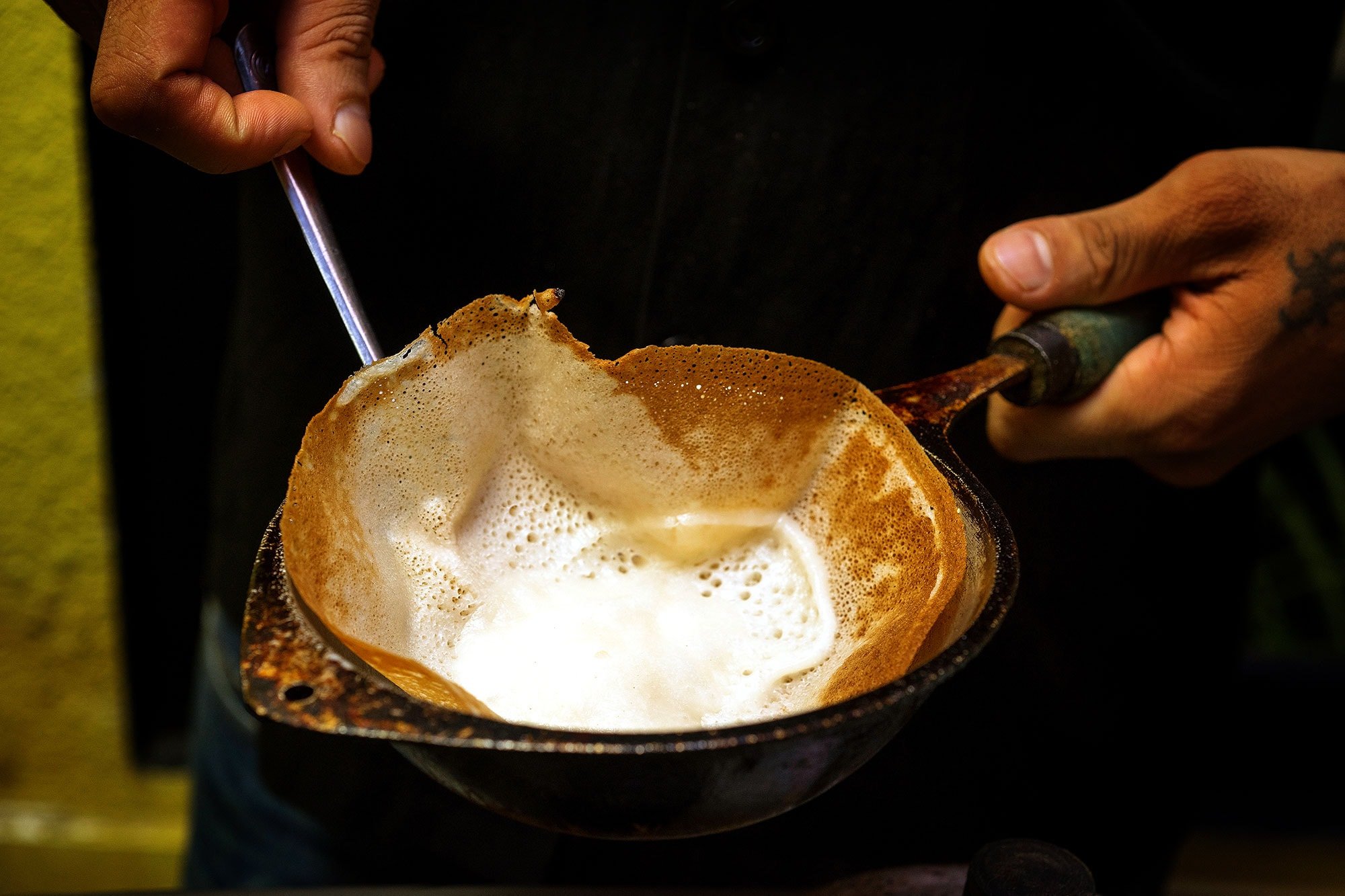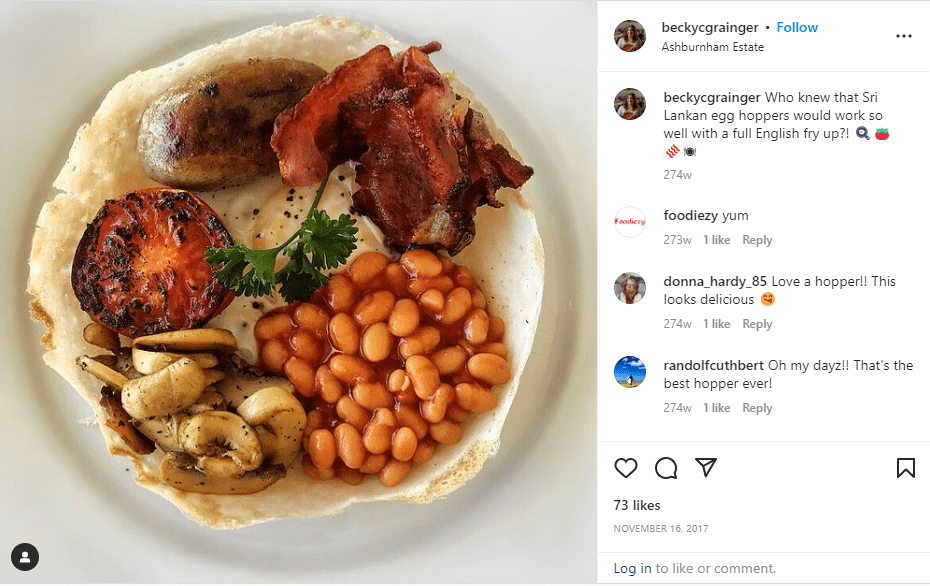
Sri Lankan cuisine is fresh, colourful and full of flavour, with a focus on creamy coconut and gently spiced cinnamon. Dishes are typically served with various wholesome starches that soak up the delicious sauce and juices of the meal. One particularly simple starch that’s enjoyed by locals and visitors alike is the hopper. Here, we’ll provide you with everything you need to know about the delicious Sri Lankan Hopper. We’ll also give you tips for making the best hoppers at home.
What are Sri Lankan Hoppers?
There are two types of hoppers commonly served in Sri Lanka. Standard hoppers resemble thin, bowl-shaped crispy Asian pancakes. They usually containing either Samboul ( a Sri Lankan coconut condiment) or often, a gently cooked egg.
String hoppers are nests of noodle-like dough and are a Sri Lankan breakfast staple. Common accompaniments include curries, curd (fresh buffalo yoghurt), chutneys and palm syrup known as ‘trickle’. They are healthy and comforting, and their versatility means they can be enjoyed with any meal or even as a snack.
Types of Hoppers and When to Eat Them in Sri Lanka
The versatility of hoppers means there are many different types to be discovered at various times throughout the day. The most common time to find this staple being enjoyed is at the breakfast table, however, their appeal extends beyond the morning hours. Some of the most popular Sri Lankan hoppers include:

-
Plain Hoppers
The plain hopper is a simple pancake that has been cooked into a bowl shape. Plain hoppers are typically eaten at breakfast and are served with a variety of accompaniments, like coconut sambol, lunu miris (a spicy onion relish), or dhal (lentil curry). They can also be enjoyed with a dollop of curd (yoghurt) and treacle for a sweet twist.
-
String Hoppers
String hoppers are delicate, thin noodles that are made from rice flour and steamed to perfection. They are a popular choice for breakfast and dinner alike. In the morning, they might be served with kiri hodi (coconut milk gravy) or a mild curry. They can be enjoyed for dinner with more hearty curries like chicken, fish, or beef.
-
Egg Hoppers
One of the most popular types of hopper is the egg hopper. They are made by adding an egg to the centre of a plain hopper, creating a delicious combination of flavours. These are often enjoyed for breakfast or as a filling snack during the day. The yolk can be runny or fully cooked, depending on preference.

-
Honey Hoppers
Honey hoppers are a sweeter variation of the traditional hopper. The sweetness is achieved by adding a touch of kithul treacle (palm syrup) to the centre of the plain hopper while cooking. These are popular as a dessert or a sweet treat in the afternoon.

This simple recipe for pancake-style hoppers is a fantastic introduction to Sri Lankan cuisine and is certain to wow your friends and family.
Preparation time: 15-20 minutes
Serves: 4 people
Ingredients:
- 375g rice flour
- teaspoon full of yeast
- 3 tbsp of sugar
- salt
- 2 cans of coconut milk
Optional: onion or tomato chutney
Method:
- Pour the rice flour into a bowl with a pinch of salt.
- In a separate measuring jug, mix the yeast with sugar in 50 ml of lukewarm water. Leave for 5 to 10 minutes to cultivate and then add the yeast mixture into the bowl of flour, stirring until evenly spread throughout.
- Add the first can of coconut milk and mix, then add a second can – only until you get a batter-like consistency, (similar to if you were making pancakes.)
- Pour one spoonful of the mixture onto a wok over medium heat and spread around; use a little oil if you need to stop it from sticking but don’t use too much. Add one egg into the middle of the hopper. Put on a lid and let it cook for about 2-3 minutes.
- Serve on a plate and add optional chutneys. In Sri Lanka, you would usually put Sambol on top but chutney is an easier alternative if you’re based in the UK.
How to Eat Sri Lankan Hoppers
In Sri Lankan culture, it is common to eat with your hands, and hoppers are no exception to this rule. To eat string hoppers, you should mix a small amount into the curry or Sambol before eating. Standard hoppers are much simpler to eat due to their convenient shape, which means they can be filled and rolled up before being eaten. It is important to remember that Sri Lankans use only their right hand for food, while the left hand is used for holding the plate and cleaning.
Experience Sri Lanka
Whilst this recipe is a great introduction to Sri Lankan cuisine, it’s simply impossible to beat hoppers prepared by the local vendors in the bustling streets of Ella. Have a look at our Sri Lanka holiday ideas for more inspiration.
All our holidays are tailor-made by our country experts, so if you want to get a personalised itinerary or just some more ideas, do call us on 020 7924 7133 . Our specialists are very happy to help – no matter where you’re at with your holiday planning. There are no obligations to book and you don’t have to pay a penny until you are completely sure that you’ve found your perfect holiday.

CURIOUS TRAVELLER'S GUIDE TO SRI LANKA
Wondering when to visit Sri Lanka? Our Curious Traveller’s Guide to Sri Lanka will give you a more detailed breakdown of the best time of year to book a holiday, as well as tips on the best beaches, unmissable sites, and much more.
DOWNLOAD NOW
